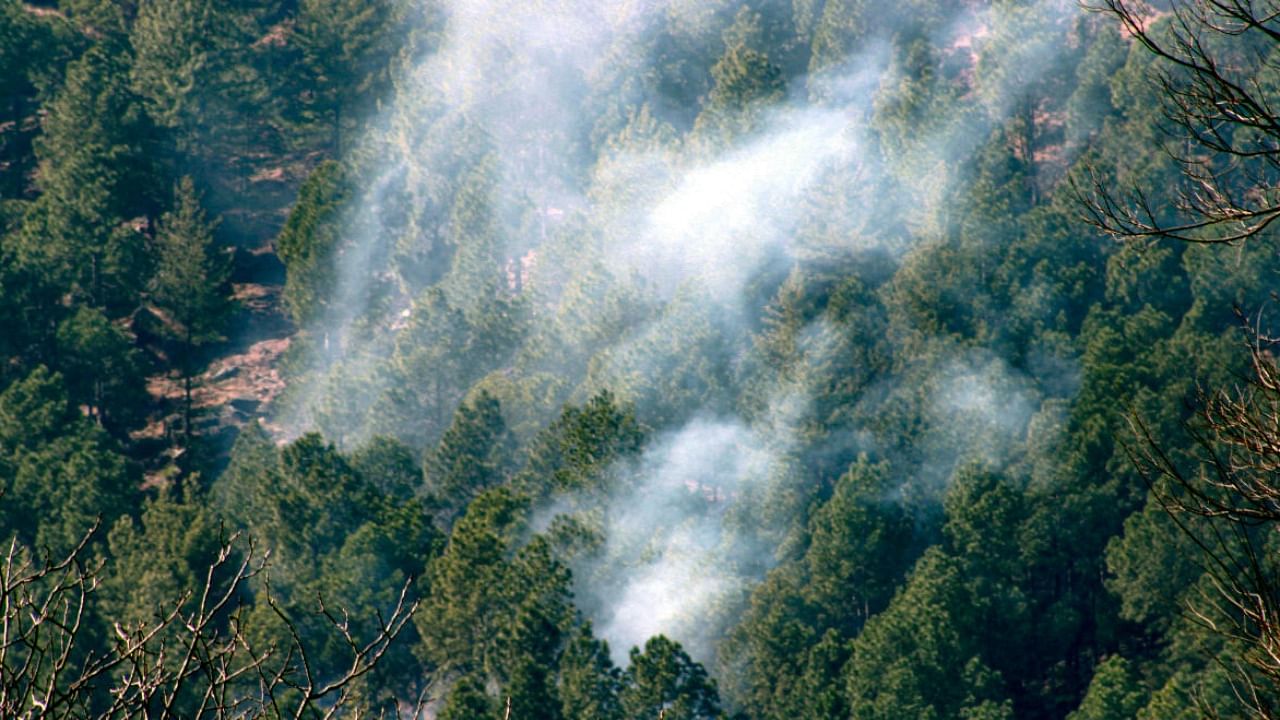
Summer is here, earlier than ever, and so are forest fires. Nearly 1,156 forest fires were reported from India between 13 and 20 February 2023, according to NASA’s Fire Information for Resource Management site. This year's early start to the forest fire season coincides with a spike in daytime temperatures that is nearly 5-9 degrees Celsius above normal across India.
These uncontrolled forest fires have worsened the already deteriorating air quality across the country, and claimed their first life when a forest guard, Sundaresh, succumbed to burn injuries sustained while fighting a forest fire in Anibeedu forest of Hassan district in Karnataka on February 18.
Forest fires have devastated many parts of India over the past decade, causing severe damage to forest ecosystems, loss of biodiversity and impacting livelihoods of forest dependent communities.
Forest fires also release the carbon locked in its biomass, making them a source of carbon emissions instead of capturing carbon, threatening India’s ambitious climate goals, and its commitment to enhance its biodiversity.
India has pledged to create enough forest and tree cover to absorb 2.5 to 3 billion tonnes of carbon dioxide by 2030. It has also pledged to restore 26 million hectares of degraded forests by the same year — promises that are unlikely to be fulfilled unless forest fires are better managed.
As per the data from Forest Survey of India’s (FSI) State of Forest 2021 report, while the total forest cover in India increased by 0.48 percent between 2013 and 2021, forest fires detected went up by 186 percent in the same time period. An analysis done by the FSI in 2019 showed that nearly 36 percent of India’s forests are prone to fires, and nearly one-third of those are highly vulnerable. Despite the rise in forest fires across India in recent years, the assistance for fire-fighting budget released by Ministry of Environment, Forests and Climate Change (MoEFCC) saw a decrease of nearly 26 percent from 2016 to 2021, according to analysis of data from various Lok Sabha responses.
Until recently scientists were reluctant to blame Climate Change directly for forest fires, however last year a report by United Nations Environmental Programme, Spreading like Wildfire: The Rising Threat of Extraordinary Landscape Fires, warned that Climate Change and land-use change are making wildfires worse, and predicted a global increase of extreme fires even in areas previously unaffected. According to the Intergovernmental Panel on Climate Change (IPCC) report of 2007, observations over the past 20 years show that the increasing intensity and spread of forest fires in Asia were largely related to rises in temperature and declines in precipitation, in combination with an increasing intensity of land use.
Simply put, Climate Change is driving temperatures higher, making droughts more frequent and plants stressed by drought are dropping leaves that are adding fuel for these fires. At the same time, the air is drier and hotter — the perfect conditions for blazes to spread.
It is important to note that India's National Disaster Management Authority (NDMA) does not recognise forest fires as natural hazards because in India most fires are deliberately caused by people, mainly for agricultural purposes, due to sheer negligence, or stoked deliberately, and therefore, considered an anthropogenic hazard. For example, the devastating forest fires in Bandipur and Mudumalai in 2019 were a result of a deliberate act of sabotage by miscreants. The NDMA may be right in its conclusions, but today all evidence points to the irrefutable fact that global warming is contributing to forest fires, and those fires are stoking further heating — it’s a deadly cycle.
To make matters worse in 2023, the past few years of cold ‘La Niña’ conditions are weakening, potentially giving way to warm ‘El Niño’ conditions later this year, according to modelling by the National Oceanic and Atmospheric Administration. During an El Niño, the ocean transfers some of the excess heat and moisture to the atmosphere. On top of the global warming trend, a strong El Niño can add up to 0.2°C to the average temperature of the Earth, which could mean less rain, higher temperatures, and increased fire risk.
The good news is that India has vastly improved its forest fire monitoring systems, and soon forest fire management will come under the National Disaster Management Authority (NDMA). However, if the Union government is serious about achieving its climate and biodiversity goals, it is critical that it not only monitors and understands forest fires using satellite data to successfully manage them in a warmer world, but also invest in fire-fighting capacity of the forest department and increase the participation of local communities in forest conservation and in mitigating forest fires.
(Shailendra Yashwant is a senior adviser to Climate Action Network South Asia (CANSA). Twitter: @shaibaba.)
Disclaimer: The views expressed are the author's own. They do not necessarily reflect the views of DH.